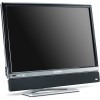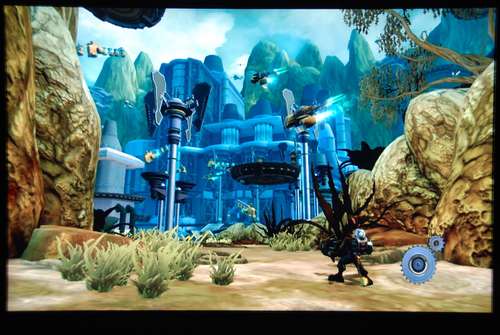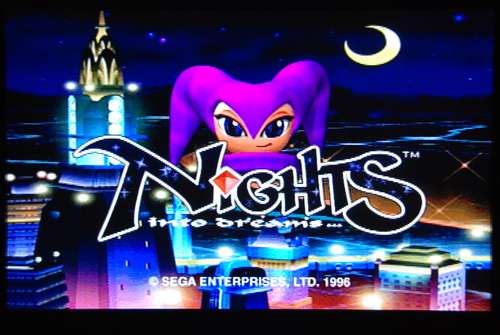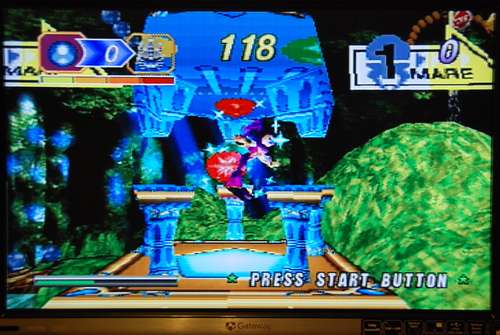- Qualcomm Launches Snapdragon 4 Gen 2 Mobile Platform
- AMD Launches Ryzen PRO 7000 Series Mobile & Desktop Platform
- Intel Launches Sleek Single-Slot Arc Pro A60 Workstation Graphics Card
- NVIDIA Announces Latest Ada Lovelace Additions: GeForce RTX 4060 Ti & RTX 4060
- Maxon Redshift With AMD Radeon GPU Rendering Support Now Available
Gateway XHD3000 30-inch Wide-Screen

Gateway, not content to let Dell and others hog the limelight in the display market, have recently launched their XHD3000 monitor. It offers a wide-range of connectivity options along with bright picture and an incredible upscaler. When said and done, this is one model we can heartily recommend.
Page 2 – Testing, Image Quality
|
|
Taking photographs of a monitor in action is one of the most difficult types of photography, and my personal pictures are certainly far from being ideal. So even though photographs of powered-on displays is not something you should base a purchasing decision on, they are here to help in any way they can.
Because I acquired this display almost immediately after I sent Dell’s 3007WFP-HC, it was a simple task to find out which of the two were brighter. The XHD3000 wins that challenge hands-down. The downside is that this display does not have a high color-gamut like the Dell, so in the end, Dell’s display might make more sense for professional photographers, if that’s your goal.
The monitors default virtual resolution is 1280×800, so that’s what will be seen during the PC POST and also after a default Windows XP installation. Vista will default to something a bit higher as it has a little more sense than it’s predecessor.
One problem I ran into was with regards to Linux, which I deem rather impossible to run at native resolution on this display. This is due to a few broken EDID profiles which tell the video driver that 1280×800 is the max supported resolution. I tried out a few different video cards and neither would allow me to go beyond the default resolution, even while trying to force it.
Different cables were used also, and nothing helped. I am truly unsure if it’s absolutely impossible to use this monitor at native resolution in Linux, but it was a problem I spent near a full day on and could not rid. I’ve been told by Gateway that an upcoming firmware update will fix this problem, but there is no known ETA. The question of why the video drivers unlock all resolutions in Windows and not in Linux is beyond me.
Computer Use
The image below is the display with all default settings. During the entire use of this display, I didn’t change anything. Though some configuration may have helped things, I didn’t feel a need to delve into it. At default, the display is bright, as are the colors. For those not pleased with default settings, brightness, contrast, sharpness, saturation and hue settings are there for the tweaking.
Yes, that’s a group of flowers on my desktop, and I’m not entirely proud of it. One of the best things about a 2560×1600 display is that it forces you to go out and shoot your own pictures, if you want a good, clear picture to fill the desktop. There are few sites that offer wallpapers that look truly fantastic at that resolution, understandably.
That aside, fonts are sharp and anything at native resolution is going to look fantastic. Because the display doesn’t boast a huge color gamut, the colors are not as natural as you would see on high-color monitors, such as the Dell 3008WFP, but it will no doubt please most people.
Gaming, as you would expect, will also please anyone who takes a look at it. Every game looks extremely sharp with great color, and given the fact it’s 2560×1600, it’s hard to see games look much better. Just be warned, you will need a beefy GPU or two if you want to run the latest games at this resolution reliably. Even 1920×1200 is far less stressful on a GPU. Consider that at 1920×1200, 2.3 million pixels are being rendered, while 2560×1600 bumps that up to 4.1 million. That, is one huge jump.
Game Console Use
One major problem most displays have is being able to render game console video well. Even though the monitors fully support them, colors can bleed, blotching can occur and sharpness will be lacking. Not so for the XHD3000 though.
While I had this display, I put it through quite a collection of tests. Because I had my Xbox 360 die at almost the exact same time when I received this display, I decided to use my PS3 for most of the testing, via HDMI and Component connections. I can honestly say that this display blew me away using either. It’s upscaler is put to extremely good use here, and I quickly decided that I liked the picture quality seen here far more than on my 26″ LCD TV, and not only due to the larger size.
I tested Rachet & Clank: Tools of Destruction to see how good the scaling and color was, and overall, I cannot complain. The picture fit the entire screen fine and suffered no visible distortion issues that are common on other monitors. The upscaler chip does it’s job incredibly well, to say the least. I would expect no less of the Xbox 360, but regret being unable to test it out.
Again, it’s difficult to truly see how great the quality is through these screenshots. I am confident that anyone who owns this monitor and uses their PS3 or Xbox 360 will have very little or no complaint. The lone complaint I have is that the monitors overall brightness is dimmed a bit when the upscaler is being used, but this is something I will touch up on in the conclusion.
Since the monitor can handle composite connections, I hauled my old Sega Saturn out of the closet to see just how well the upscaler handles that situation. Now, this console was first launched in late 1994, so I didn’t expect miracles here. I am unsure of the graphic resolution of the console, but 640×480 seems like a reasonable estimate. Upscaling something like that through an already mediocre cable is a challenge.
As I expected, the console didn’t look amazing, but it doesn’t look amazing on any high-definition TV or display. The fact is though, when considering it was such a massive upscale and I was using a Sega Saturn from 1994 on a 30″ display today… it’s hard to complain. The game was fully playable, and that’s what matters.
On the next and last page, we will take a look at movie viewing, PIP and lastly, our final thoughts.
|
|
Support our efforts! With ad revenue at an all-time low for written websites, we're relying more than ever on reader support to help us continue putting so much effort into this type of content. You can support us by becoming a Patron, or by using our Amazon shopping affiliate links listed through our articles. Thanks for your support!










